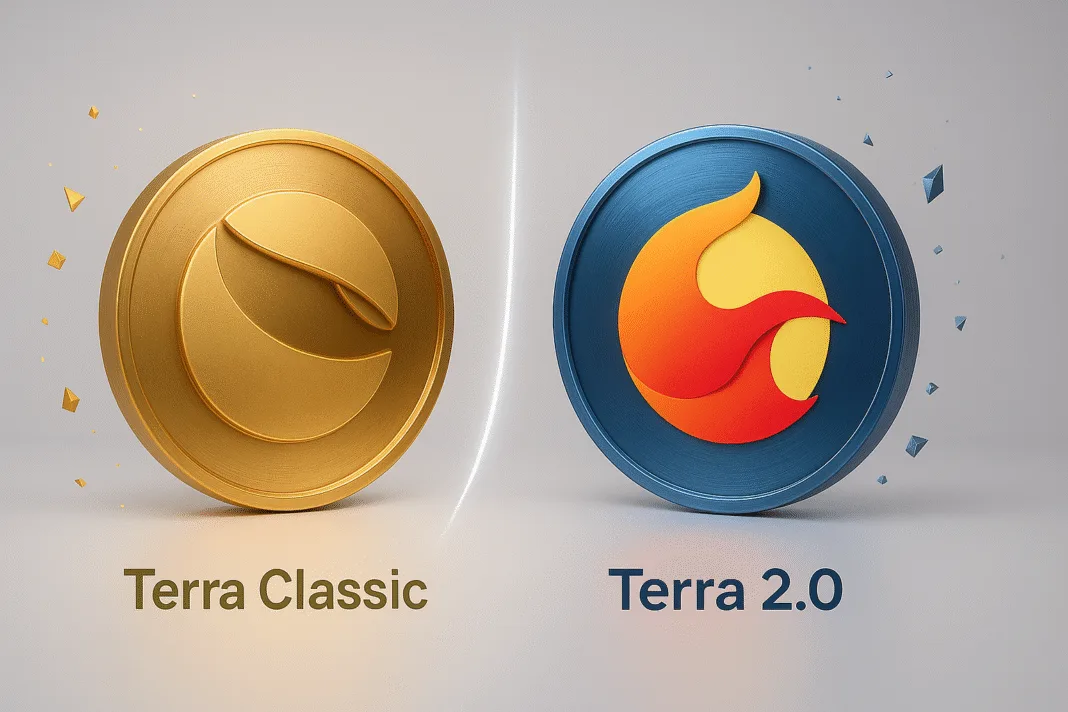Terra Classic (LUNC) and Terra 2.0 (LUNA) are two distinct blockchain ecosystems that emerged from the Terra network’s turbulent history. Understanding their differences is key to grasping their roles in the crypto space.
Background and Split
Terra Classic is the original Terra blockchain, launched in 2018, which relied on a dual-token system: LUNA for governance and staking, and UST, an algorithmic stablecoin. In May 2022, UST’s depeg from the U.S. dollar triggered a catastrophic collapse, wiping out billions in value. To recover, the Terra community proposed a fork, creating Terra 2.0, a new blockchain without a stablecoin, while the original chain was rebranded as Terra Classic.
Token Structure
Terra Classic retains its original LUNA (now LUNC) and UST (now USTC), though USTC is no longer pegged and trades at a fraction of a dollar. Terra 2.0, however, operates solely with a new LUNA token, focusing on decentralized applications (dApps) and avoiding algorithmic stablecoins to prevent past failures.
Purpose and Functionality
Terra Classic aims to preserve the original ecosystem, with community efforts to revive value through token burns and governance proposals. Its focus remains on stabilizing USTC and supporting legacy dApps. Terra 2.0, by contrast, is a fresh start, emphasizing DeFi, NFTs, and developer-friendly infrastructure, free from the baggage of UST’s collapse.
Community and Development
Terra Classic is driven by a passionate community seeking to restore its former glory, while Terra 2.0 attracts developers building new projects with improved governance and security. Both chains operate independently, with distinct roadmaps and visions.
In summary, Terra Classic clings to its original framework, while Terra 2.0 reinvents itself as a stablecoin-free blockchain, each catering to different goals and audiences in the crypto world.

